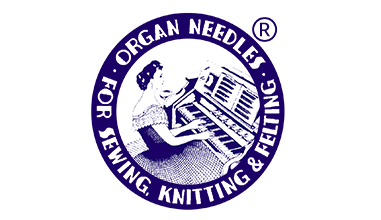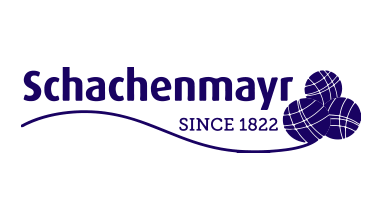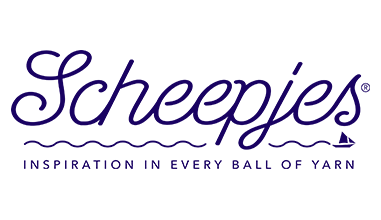How to: dye Scheepjes Nakid yarn
With the new Scheepjes Nakid series, each yarn can be transformed into a personal work of art. In this blog, you’ll find a guide to dyeing the yarns with our Jacquard dyes and discover the endless possibilities these products offer your customers.
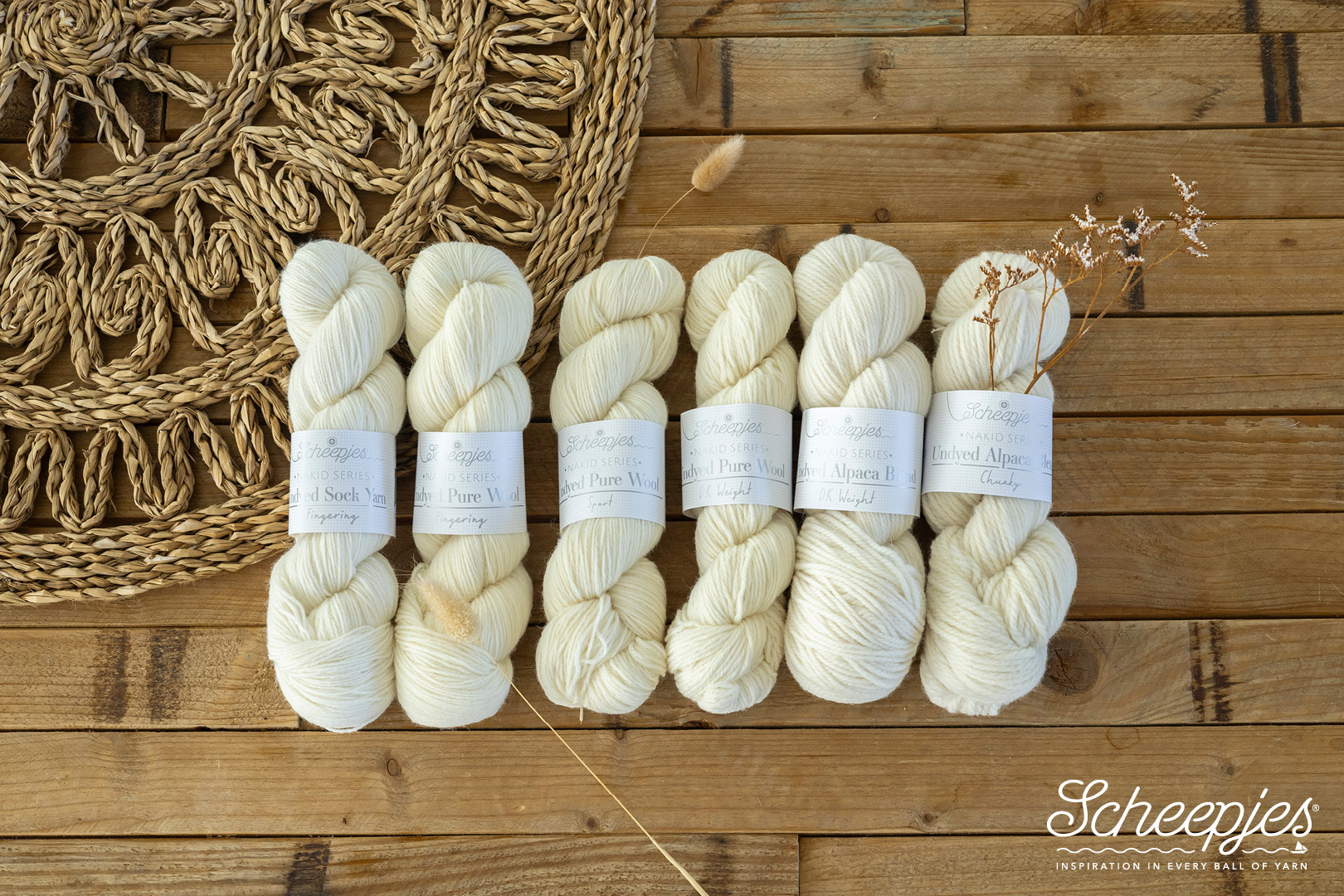
Scheepjes Nakid Series
There are three different undyed fibre options in Scheepjes Nakid Series. Alpaca Blend skeins are 80% Wool, 20% Alpaca and available in DK and Chunky weights.
Pure Wool
Pure Wool skeins are available in Fingering, Sport and DK weights and 100% Basolan Wool. This means the fibres have been treated to remove some of the scales and to slightly alter their structure.
Basolan Wool
Items made with Basolan wool benefit from improved water-repellence, and are more durable and less prone to felting, pilling or absorbing odours when compared to untreated wool. For hand-dyers, because the surface of the fibre is etched, the pigment penetrates the fibres more deeply, making the colours appear more brilliant.
Sock Yarn
The fingering weight Sock Yarn is a blend of 75% Superwash Wool and 25% Nylon. This yarn feels extremely smooth, has a slight sheen and can conveniently be machine washed at 30°C.
Jacquard Dyes
Jacquard Acid Dyes are ideal for protein fibers such as silk, wool, and nylon. They are available in a variety of individual colours and sets, including a starter kit with four basic colours and citric acid as a fixative, perfect for beginners. With our extensive range of Jacquard dyes, all crafters can create the most beautiful works of art.
Essential Equipment
For dyeing wool using the stove top method these are the required items:
- Large steel or enamel lidded pan.
- Tiny scoops/spoons for dye powder.
- Micro-scales for weighing the dye powder.
- Stirring spoon.
- Measuring jug.
- Jars or empty bottles to keep dye stock in.
- Rubber gloves and face mask (breathing in dye dust may be harmful).
- Few cable ties (reusable are available), shower curtain rings that open and close, or similar.
- Synthrapol* or an equivalent mild detergent.
*Synthrapol is a liquid detergent specifically designed to remove excess dye particles. The kit instructions recommend washing the yarn in it after dyeing.
Note: It’s important to note that any pots or utensils used for dyeing should never be used afterwards for food preparation. A protective mask and gloves should always be worn when measuring out the dye powder.
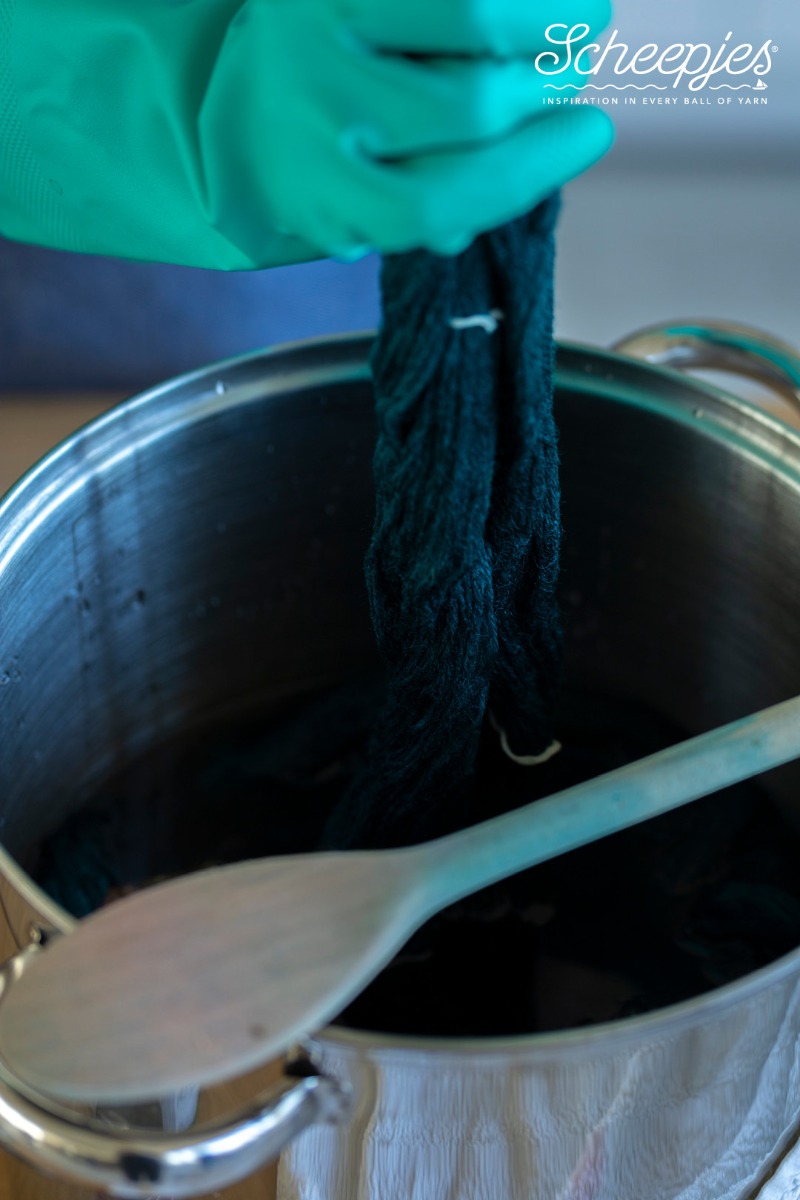
Guidelines
Step 1 - Prepping the Yarn
Nakid has plenty of skein ties attached (loops of yarn tied around several sections in a figure of 8) so there should be no need to add more. The ties help to prevent the yarn from tangling so leave these in place. Adding the cable tie/curtain ring is a good idea as it helps with lifting the skein in and out of the water. If you're using two skeins of different fibres, you might want to use a different tie to easily identify which is which later.
Step 2 - Pre-soaking
Pre-soaking helps the dye permeate to the core for even results. Use a bucket with enough room temperature water to cover the skeins and added a capful of Synthrapol and a tablespoon of citric acid. The Synthrapol removes any residual grease from handling which could cause lighter and darker spots and ensures the yarn is nice and clean. The citric acid helps the dye to quickly bond with the yarn. You'll need to leave the yarn soaking for at least 30 minutes.
Step 3 - Making Dye Stock
While the yarn soaks, put on protective gear and cover the table ready make dye stock. Stock stores well so you can make up a whole load at once or make what you need as you go. Only tiny amounts of dye powder are needed - the pots in the kit go a very long way.
The dye kit includes a colour wheel and mixing ratios for more complex colours. For example, to make blue teal, use 1 part Jet Black to 7 parts Turquoise. For a full-strength result make a 1% stock, i.e. use 100ml water for every gram of dye. For pastel colours, you need 400ml water for every gram of dye.
The water needs to be very hot to dissolve the grains. Pour boiling water from the kettle into a measuring jug and leave to one side while you weigh the powder. Add about 100ml of the water to begin with and stir to make a paste. When that is completely dissolved, add the remaining amount of water for the strength of stock required.
Step 4 - Prepping the Dye Bath
To create solid colour, use the full immersion method i.e. the yarn is completely submerged. Pour enough room temperature water you think will cover the skeins into the pan plus about half an inch. This will depend on the size of your pan. You ideally want a pH level of about 2.5, so stir in 1-2 tablespoons of citric acid (tap water can slightly affect levels).
Once the citric acid has dissolved, add your yarn to the pan. Grab the cable tie to pull the skein out of the soaking bucket. Holding it over the sink, run your hand down the length of the skein a couple of times to remove excess water. Strictly no wringing as this could felt the yarn! Fold the skein in half and lower gently into the pan without agitating. Ensure yarn is completely immersed.
Step 5 - Cooking
Turn on the hob at a low heat. You don't want to shock the yarn into felting by any quick changes of temperature. Gently bring the temperature up to 80°C, just below boiling and add your dye stock. The stock/water ratio is about 1:24 e.g. for 3 litres you would add added 125ml stock. (For: imperial units that's half a cup of stock for every 12 cups of water) The water will immediately change colour, then gradually turn clear as the dye exhausts. Put the lid on and maintain temperature at 80°C. Check every 15 minutes or so to see if you're happy with the colour (it will dry a fair bit brighter) and check if the water has turned clear by dipping a spoon in. Thirty minutes should be enough.
Final Steps
Turn the heart off and leave to cool completely. Gently swish in a bowl cool water with a capful of Synthrapol and rinse. Repeat if needed until the water runs clear (note that reds/pinks don't exhaust so easily and tend to leave a little residue the first few times). Run your hand down the length of the skein to remove excess water and hang to dry naturally. Results can vary a little depending on the fibre.
Once the yarn is completely dry, if you want to use it immediately wind it into a ball or cake. Otherwise, you can turn it back into a twisted skein until you find the perfect project. With your arms out, hold one end of the loop in each hand and hold it taut. Keep one end still and twist the other end away from you. After a few twists you will feel when it wants to 'give' in the middle and twist around itself. Then take the end in the hand you twisted and pop it through the loop at the other end. If you're ready to use it immediately, you can wind it into a cake or ball instead.
Inspiration
To create variegated yarns, try partial immersion where the water in the pan only covers some of the yarn. Added the lightest shades of dye stock first. Using syringes can be helpful to place colour where you wanted it and to ensure colour penetrates right into the centre of the skein.
After approx. 15 minutes when the dye has exhausted, add darker shades. Repeat until you are happy with the colour. Bear in mind that the yarn will dry lighter and brighter than it appears in the pan. To blend colours, gently push the yarn under the surface for a few seconds.
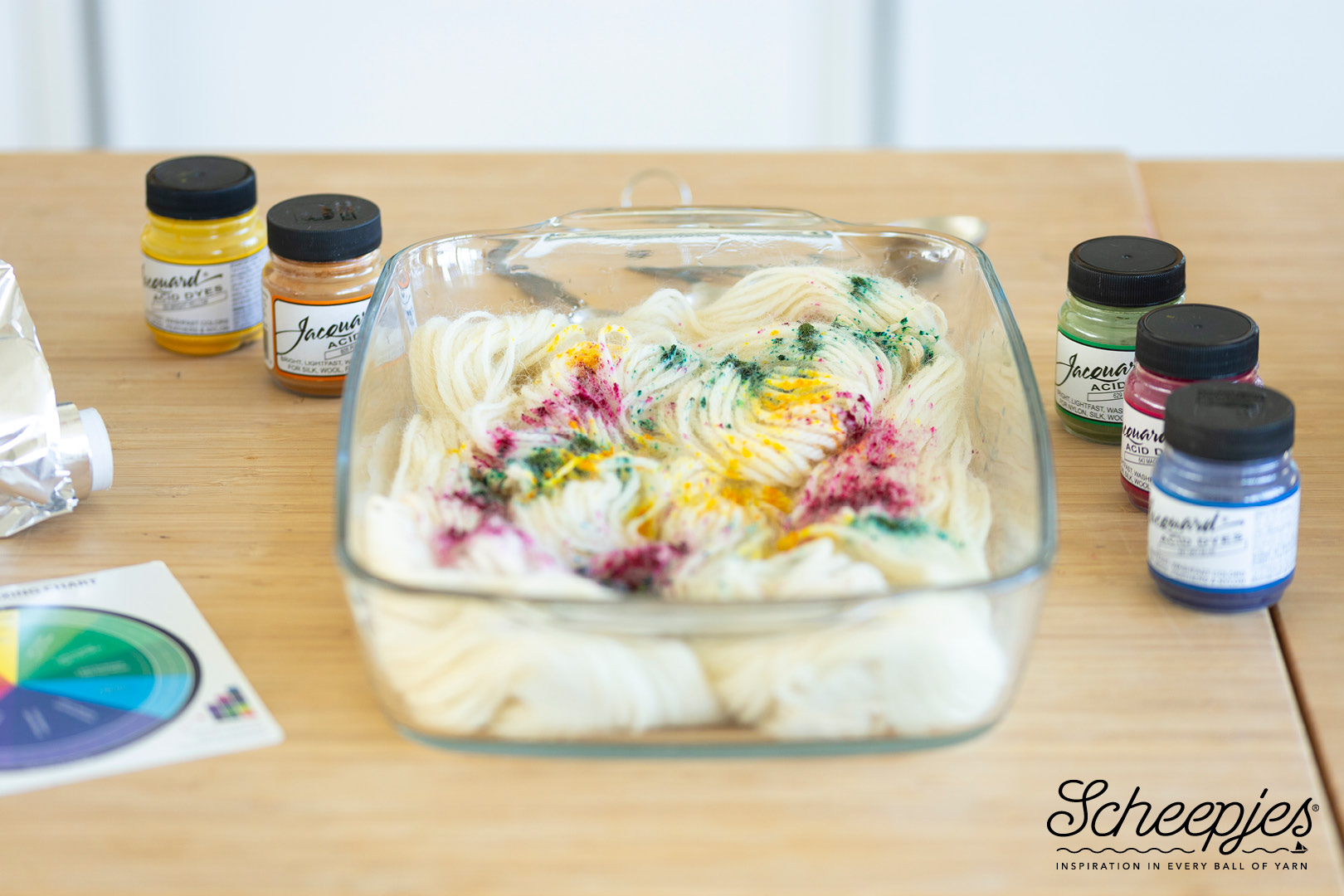


 www.debondtbv.nl
www.debondtbv.nl  www.debondtbv.de
www.debondtbv.de 






